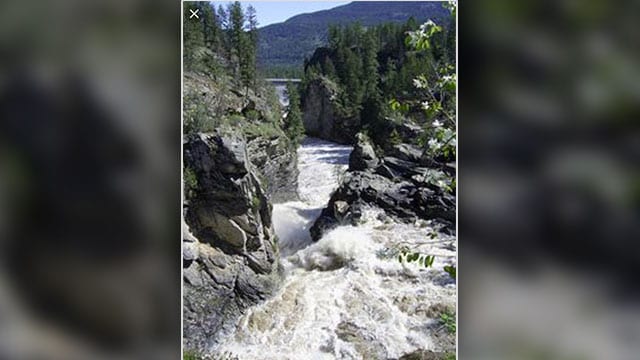
The Fraser River is home to salmon spawning grounds in British Columbia.
More than 20 Fraser River First Nations say they were short-changed on the amount of salmon they could catch this fishing season.
“It really is a rights infringement issue,” said Chief Dalton Silver of the Sumas band in the lower Fraser Valley.
Silver leads one of 25 bands along a 200-km stretch of the river between Port Mann Bridge and Yale, B.C., which belong to the Lower Fraser Fishing Alliance (LFFA).
Despite major court victories confirming salmon for their food, social and ceremonial rights, he said Indigenous fishers are still under the thumb of the Department of Fisheries and Oceans (DFO).
“There is no compliance with any of the Supreme Court of Canada decisions made in our favour.”
The LFFA issued a news release Monday blaming DFO for mismanaging the catch this year.
It claimed the fish were there – with an estimated return of 10 million sockeye – but DFO moved too slowly in approving a request for more gillnet fishing.
As a result, Silver said First Nations were “fed up” with DFO management practices.
DFO did not provide a response before this story was published.
“We didn’t meet our food and food security needs, which is so important because the fish only come every four years,” Silver added.
LFFA said it was September by the time more gillnet fishing was allowed and by then it was too late.
“By then, fishers from First Nations were restricted to using selective beach seine methods to target remaining sockeye allocations; a method that has yielded smaller catches and effectively shuts out a third of the nations who don’t have access to seine fishing locations in the gravel bars,” it said in the release.
The LFFA said its members were held to 300,000 sockeye this year, which they need to stockpile for food, social and ceremonial needs for the next three years.
Harrison Fisheries Authority, consisting of Sts’ailes and Scowlitz First Nations, expects to fall short by 7,632 sockeye, LFFA said, while the remaining 23 bands will take home 48,976 fewer fish than expected.
Rod Clapton, co-chair of the Fraser River Sportfishing Alliance and president of the B.C. Federation of Drift Fishers, was surprised to hear First Nations didn’t meet their “allocation.”
He said the sport fishing community had its own problems with the way DFO managed the fishery this year.
“We’ve been shut down for two weeks and they’re still fishing,” he said.
“Nobody can blame us for taking their fish.”
Racial and political tensions surface every salmon season, Clapton added, noting the fishery is a controversial subject that has been studied and reviewed at several levels.
“From a recreational perspective, I can appreciate where the LFFA is coming from,” he said.
The 2018 salmon migration is described as a “dominant” year after three poor fishing years in a row.
“Four-year cycle numbers were very healthy this year,” said Clapton. “So we assumed we would stay open because projections were generous.”
“That’s why we feel DFO (is) applying a double standard when they shut us down on the river and yet they allow the (saltwater) marine fishery to continue.”
Clapton said establishing a Fraser River round table – that works in other parts of B.C. – would assist DFO and give local fishers more of a say in what’s happening.
He said he was waiting to hear back on the idea from First Nations.
But Silver said he would like to see First Nations manage the fishery without DFO.











The stocks are in steep decline. There are not enough fish returning to sustain the long term population, let alone a decent fishery, and they are arguing over killing even more? I understand cultural rights etc, but how far are they going to push this? When there is one fish left, are they going to want their piece of it, or are they going to let it spawn? This applies to ALL the parties arguing about killing the fish right now. When there are no fish left, it will be rather too late to stop fishing for them.
The stocks are in steep decline. There are not enough fish returning to sustain the long term population, let alone a decent fishery, and they are arguing over killing even more? I understand cultural rights etc, but how far are they going to push this? When there is one fish left, are they going to want their piece of it, or are they going to let it spawn? This applies to ALL the parties arguing about killing the fish right now. When there are no fish left, it will be rather too late to stop fishing for them.
“We didn’t meet our food and food security needs, which is so important because the fish only come every four years,” Silver added.
If they didn’t meet their needs why did they allow natives to be selling their sockeye all along the fraser valley? Perhaps the chiefs should be truthful and clarify the needs are not for “food” but for financial benefit.
“We didn’t meet our food and food security needs, which is so important because the fish only come every four years,” Silver added.
If they didn’t meet their needs why did they allow natives to be selling their sockeye all along the fraser valley? Perhaps the chiefs should be truthful and clarify the needs are not for “food” but for financial benefit.
Gotta love those good old Conservative party policies that the liberals are still trying to clear out! This here is another remnant of that screwed up party and their stupidity! It will be decades before all their FUBAR’s are cleaned out!
Gotta love those good old Conservative party policies that the liberals are still trying to clear out! This here is another remnant of that screwed up party and their stupidity! It will be decades before all their FUBAR’s are cleaned out!